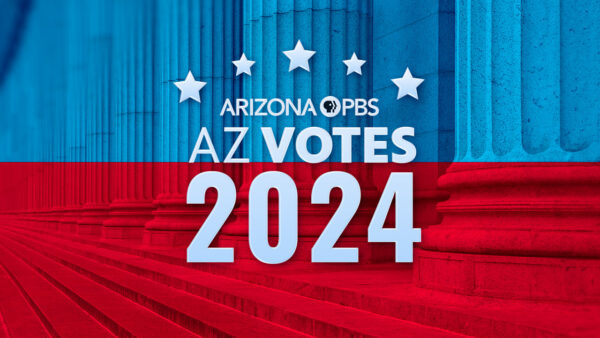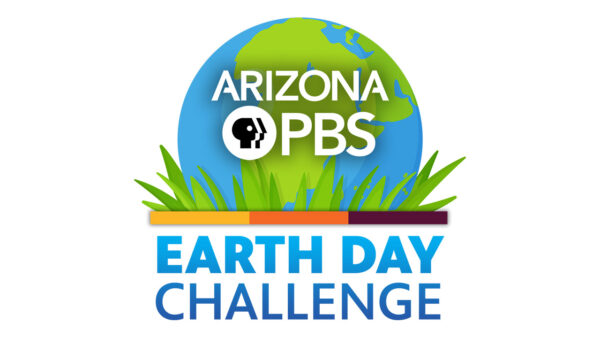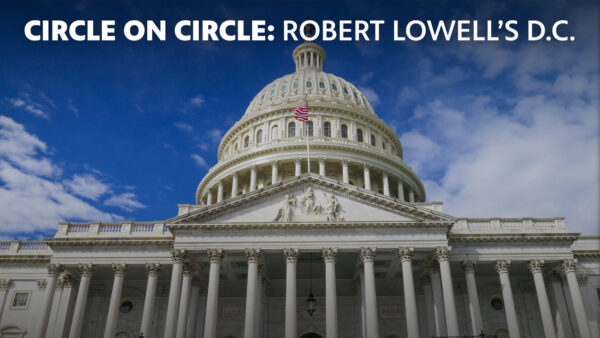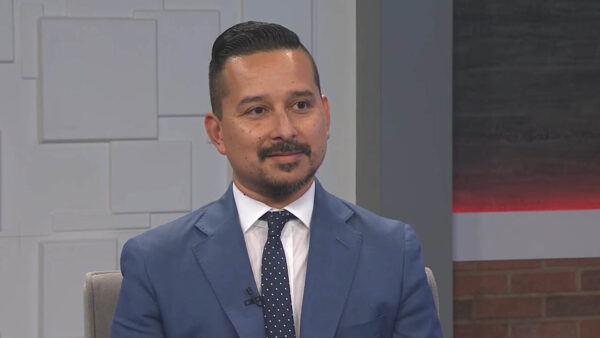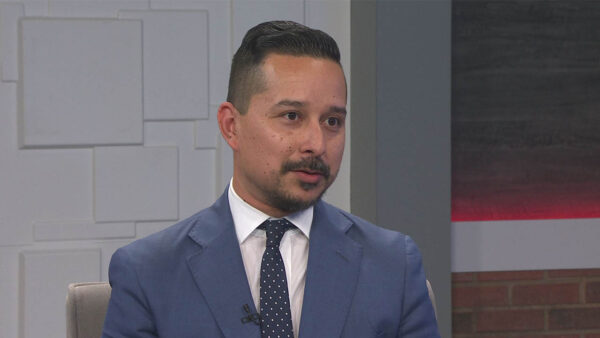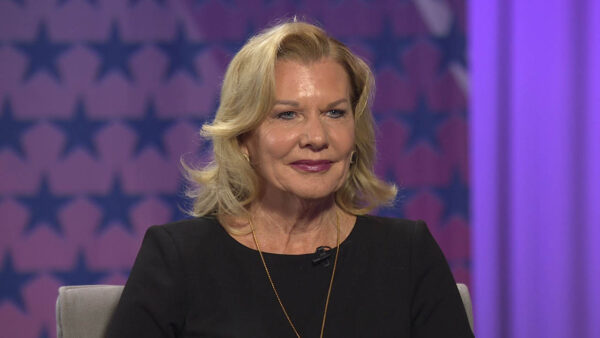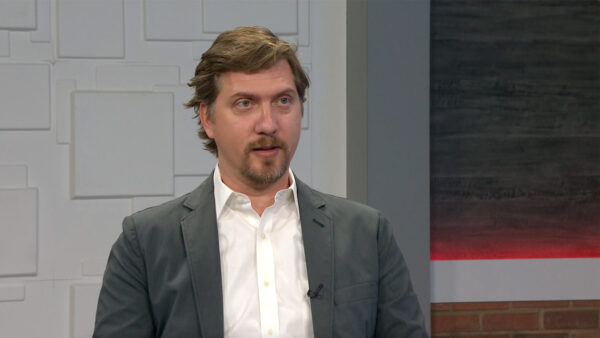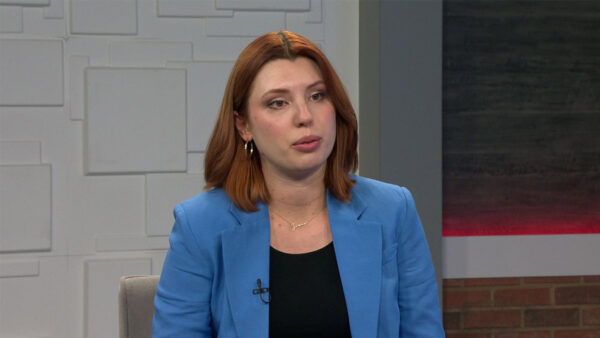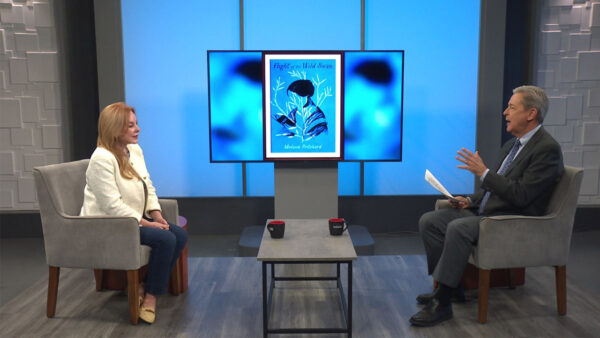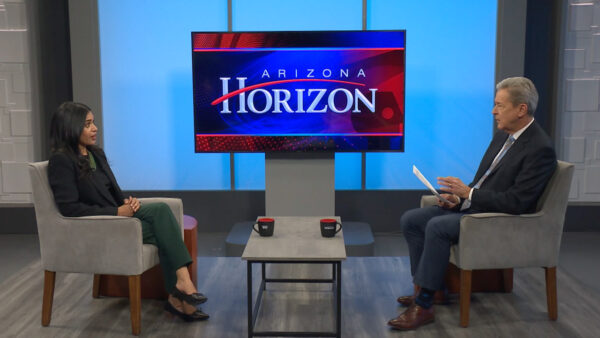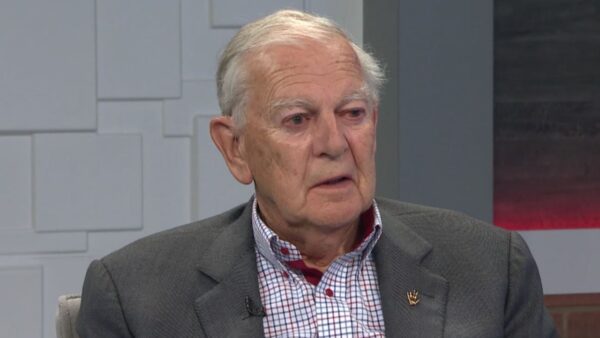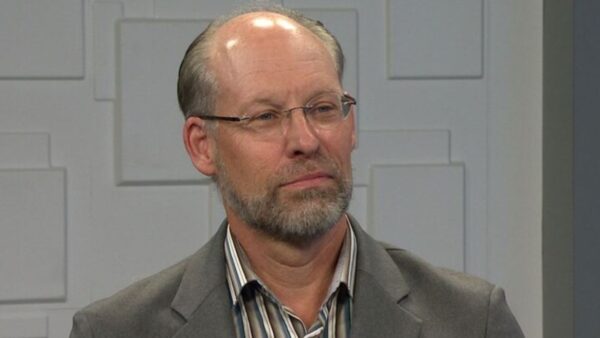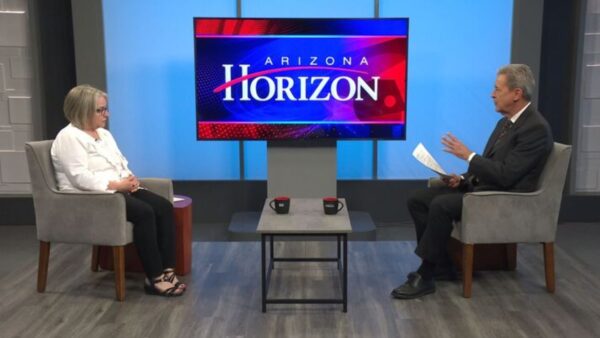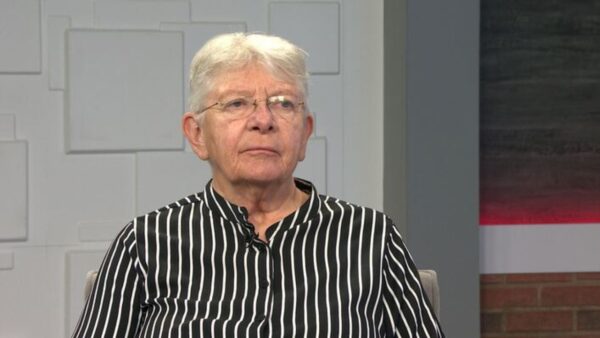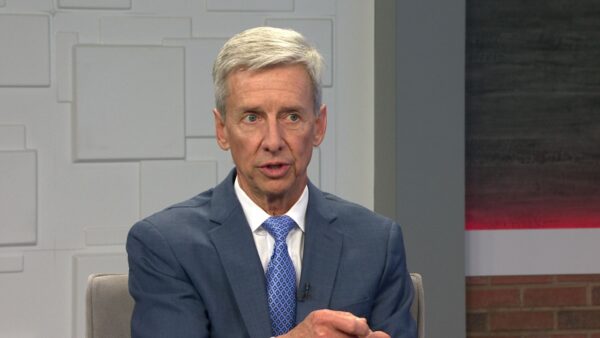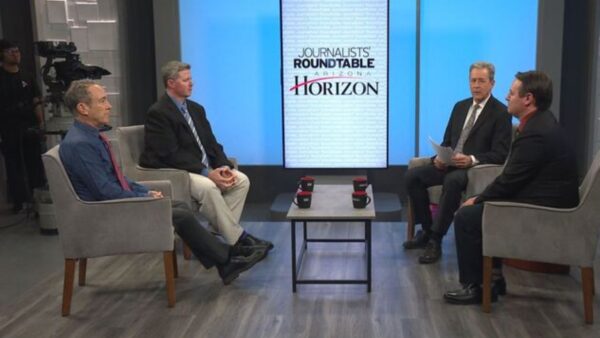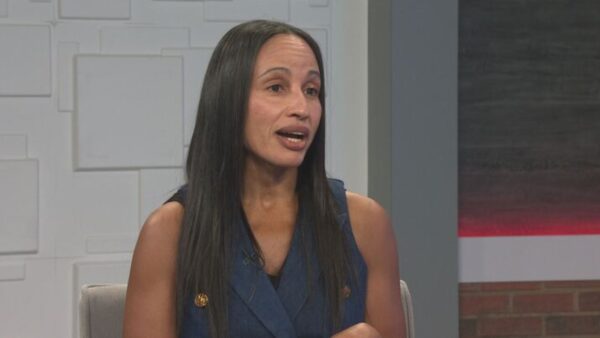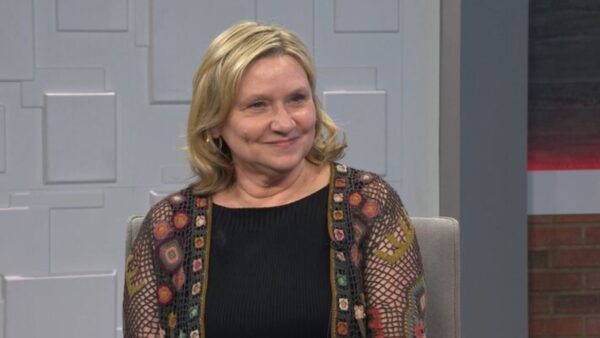Some political experts say presidential candidate Donald Trump exhibits an authoritarian style of leadership, which is characterized by a strong leader or central government and limited freedoms. Kim Fridkin, a professor in Arizona State University’s School of Politics and Global Studies, will discuss the idea.
Ted Simons: An authoritarian style of leadership is characterized by a strong leader with a simple message of security and a promise to defeat real or imagined threats with force. Some political observers see those qualities as the main attraction of Donald Trump's presidential campaign. Here to discuss that idea is Kim Fridkin professor of ASU School of Politics and Global Studies. Give me a better definition of authoritarianism.
Kim Fridkin: Well, that's when certain types of people really want to maintain social order. And they don't like change. And they want a strong leader to try to maintain that social order.
Ted Simons: Not only to maintain the general order but to protect them. Right?
Kim Fridkin: Well, authoritarianism becomes more activated when people are, feel threatened. So that's where the protection comes from. They look to a leader who will protect them by maintaining the life as they know it, how they want it. They're afraid of new disruptions to what they know.
Ted Simons: There are people that are kind of naturally that way. But almost anyone can be that way if faced with a threat. Correct?
Kim Fridkin: Yes. I think some people are more likely to become that way when they feel threatened by some kind of outside force. But other people don't really have that tendency. And even if there's a threat they will not become authoritarian.
Ted Simons: So who is most attracted to authoritarianism?
Kim Fridkin: I think it's people who are more likely to like things to stay the same. Not to change. So they're people who feel threatened by a new order. So let's say like changes in the country, like new immigrants coming to the country, or changes like social changes that have been occurring such as gay marriage, people who feel that is threatening their way of life.
Ted Simons: And reading on this it sounds like men more often than not.
Kim Fridkin: Yeah.
Ted Simons: Less educated. Economically marginalized in many cases. Sounds like that might be a pretty big constituency.
Kim Fridkin: Yes, it can be. But it's only some people within those demographics. And I think that the economic marginalization, that's probably pretty important because they feel they need to make sure that they are not going to lose their position in society. So they're more afraid of change.
Ted Simons: But that's interesting. Because we keep hearing how so many people have lost their position in society. And there's really, you would think they would be saying, all right, let's change things up. Let me try another chance from this direction as opposed to that direction but it sounds like they are hunkering down.
Kim Fridkin: In terms of, yeah, but certain people, like so there's more to Trump in terms of marginalized people, economically. But Sanders is appealing to a different demographic but also people who feel marginalized but maybe in a different way. He's not appealing to people in terms of authoritarianism, but it's still the same sort of marginalized. Different type of people but --
Ted Simons: That's interesting.
Kim Fridkin: Yeah.
Ted Simons: I notice that education, the education gap was also a big factor here. Talk to us about that.
Kim Fridkin: Yeah. So I think that people who are less educated are more likely to be attracted to a leader who has more authoritarian tendencies because the message that resonates with them is a simpler message. So one of more like slogans and things to make them feel safe. But doesn't really require much cognitive processing.
Ted Simons: But yet it looks like it does cross some educational lines. It seems like it crosses income, it crosses age, it crosses religion. How do you -- how -- Trump has tapped into something here. I don't know if he did it purposely but he's tapped into something here. Is this something that will be a factor for quite a while?
Kim Fridkin: I think it will be. Part of the reason is right now the way our politics is, there's a correlation between people who feel threatened by outsiders or others, and that corresponds right now with the ideology. So for example, it has always been this way, but things like gay rights, transgender issues and immigration and letting Syrian refugees come in. People on the left are fine with that and people on the right are less likely to support that. So there's this co-variation between ideology and what authoritarian personalities would be comfortable with.
Ted Simons: Interesting. So it looks as well as it's a backlash against social change pretty much is what you are talking about. Is it also a backlash against younger people, a backlash against the better educated middle class people? I mean because they see those folks as not holding on to the same ideals?
Kim Fridkin: I think it's more of a backlash against social change. What sometimes is referred to as the other. So things that people are not comfortable with that are different, that seem to be changing the way of life as they grew up with, that they are comfortable with. So it's not really a backlash against like a more educated society.
Ted Simons: At least not a conscious backlash.
Kim Fridkin: Right.
Ted Simons: It seems like it also is kind of falls under this umbrella of political correctness. We hear people using this phrase a lot. And it seems as though, when you are talking about diversity and gender roles and gay marriage and secular values and all these things, there's always a measure of, quote-unquote, political correctness involved in the dialogue. Is that a sign of authoritarianism in the conversation?
Kim Fridkin: I think it's a symbol that people can relate to. And so that's what it's kind of drawing people. Is they don't like this political correctness, which symbolizes a lot of these things they are talking about. So it kind of, I don't know, is a cue for them to think about issues in a certain way.
Ted Simons: I would imagine their concern with a long-term generational shift here. They might be older. But they still see something in the future that they don't like and they're kind of inching over toward that idea.
Kim Fridkin: I think that's right. And I think that Trump has tapped into it. And I think that whether it's on purpose or not, these people are attracted to his really simple message about, we don't want this kind of change. I am going to take the country, make the country great again. Like again, before these things changed.
Ted Simons: Indeed. Again, before. So authoritarianism, is it behind much of the polarization we are seeing now in politics?
Kim Fridkin: No. I think it's different. But I think that what happens is that we are having this polarization and the polarization is not only on economic issues, it's on social issues. And so the polarization of the social issues is making the rights farther, I don't know, more homogeneous so that's kind of encouraging this authoritarianism.
Ted Simons: With that in mind, is authoritarianism behind a rift in the Republican party?
Kim Fridkin: Well, that's a good question. I think that the more extreme candidates like Trump and Cruz, I should say the nontraditional candidates, and I think they're appealing more towards this authoritarianism than the more traditional Republicans. So I don't know which is causing which. But there is definitely a correlation.
Ted Simons: We should mention this is not just a America here. We are seeing a lot of this throughout the west. Aren't we?
Kim Fridkin: Yes. And I think it's because of the rise of the threat of terrorism, makes people scared. That's when people are more susceptible to these attitudes.
Ted Simons: To the fear and the concern over the other, as you mentioned. It's very interesting stuff. I mean it's kind of like a political lesson written large.
Kim Fridkin: It is. It's very interesting. It's very -- it's a little scary. Right? Because people are kind of latching on to certain symbols and not really thinking through what these symbols mean.
Ted Simons: All right. Good to have you here. Thanks for joining us.
Kim Fridkin: Thank you.
Video: Introducing classical Arizona PBS, your classical music connection. Listen to Arizona PBS on digital channel 8.4, on the go, download the free PBS app to screen performances. Find out about classical concerts and watch exclusive videos. Download the free classical Arizona PBS app. Then follow classical Arizona PBS on Facebook and Twitter. Your classical music connection.
Ted Simons: Corporations pay big money to see their names on the sides of stadiums and arenas. But in high school sports the naming of a field is a much more humble and meaningful story. Producer Shana Fischer and photographer Langston Fields introduce us to an author who answers the question, who is Gym?
Video: Yeah. There were --
Shana Fischer: By day Scott Hanson runs a successful public relations company. But during high school football season, he trades in his suits for stripes as a head referee. And it was at one of those games that Hanson found his newest venture.
Scott Hanson: I have been officiating high school sports in Arizona for 30 years. And three years ago my football crew and I arrived at a high school and I looked up at the stadium and saw the name of the stadium. It was cactus high school. And I asked the guy in parking lot. Who is M.L. Huber? He didn't know. The next week our crew arrived at another high school. Independence high school to officiate the varsity football game and it says stadium on the side of the building. I asked the guy in the parking lot. Who is that? He didn't know.
Shana Fischer: Hanson loves history. And a challenge. So he decided to do a little research and find out the who and why high school football fields and gymnasiums are named for. What emerged after three long years is the book, "Who is Gym?"
Scott Hanson: Really what's happened is all of these facilities in Arizona, many of them were named for people a long, long time ago and it's become lost Arizona history.
Shana Fischer: Hanson's quest has taken him all over Arizona, from Parker to Thatcher, and from Flagstaff to Nogales. In Bisbee he found the answer to Warren fields.
Scott Hanson: George Warren was an old prospector in the 1800s and George discovered what is now the copper queen mine. He passed away before he had a chance to really make any money from that mining operation. But the people that were around him knew him enough they named that ballpark Warren ballpark. There's a little more about George Warren. Think about the seal of the state of Arizona. There's a prospector holding a shovel. That's George Warren.
Shana Fischer: There are fields dedicated to military personnel. McClintock high is named after a member of Teddy Roosevelt's roughriders, James McClintock. He was in the first graduating class of what is now known as Arizona State University.
Scott Hanson: In Winslow, Arizona, they have the Jay Vargas baseball field.Well Jay Vargus was a Vietnam War hero. He received a Medal of honor for his heroism while he was in Vietnam. That is so important not only to Winslow but to Arizona and the United States in general. That we just can't forget some of those stories that are really a part of what makes Arizona such a great place.
Shana Fischer: Hanson met many challenges along the way.
Scott Hanson: Much of it had to do with the people at schools today don't know the history of their own schools.
Shana Fischer: And discovered that sometimes the most obvious answer is the wrong one.
Scott Hanson: I grew up right here in Phoenix. And I always thought Greenway high school was named Greenway high school because it's on Greenway road. But come to find out in my research Isabella Greenway was the first female representative from Arizona and her husband was a copper executive.
Shana Fischer: When it came to his own alma mater, Washington high school, that perhaps was the easiest one of all. The field is named for coach Tom Hagle. Hanson played ball for coach. In all "Who is Gym?" highlights 200 schools and gymnasiums in spite the varied stories the honorees have one common thread.
Scott Hanson: I think what I really found in doing the research is that the people who are included in the book are or were the fabric of their community. They had such an influence on the student athletes that they coached, the kids that they taught, the community at large, whichever small town or large town that they lived in, they were so important to that particular area, that we have memorialized them forever with the names of schools and gyms and those types of things.
Ted Simons: And that is it for now. I'm Ted Simons. Thanks for joining us. You have a great evening.
Video: "Arizona Horizon" is made possible by contributions to Arizona PBS. Thank you.
Kim Fridkin: Professor in Arizona State University's School of Politics and Global Studies
